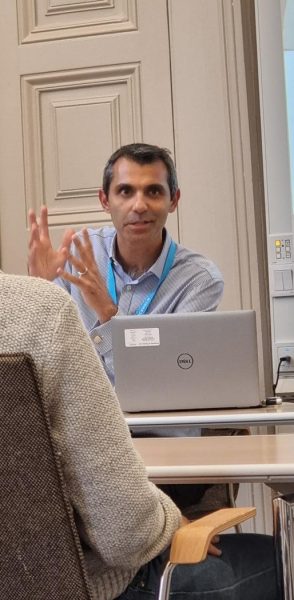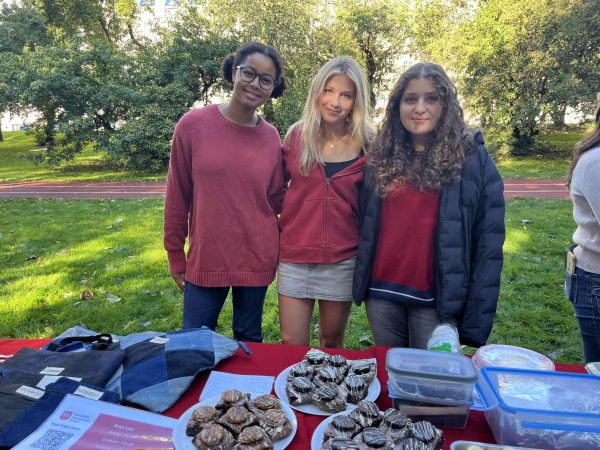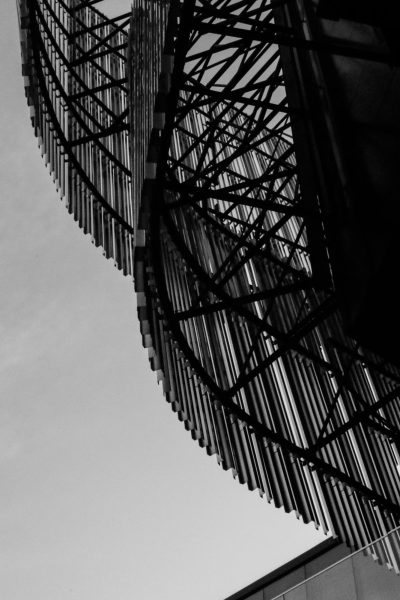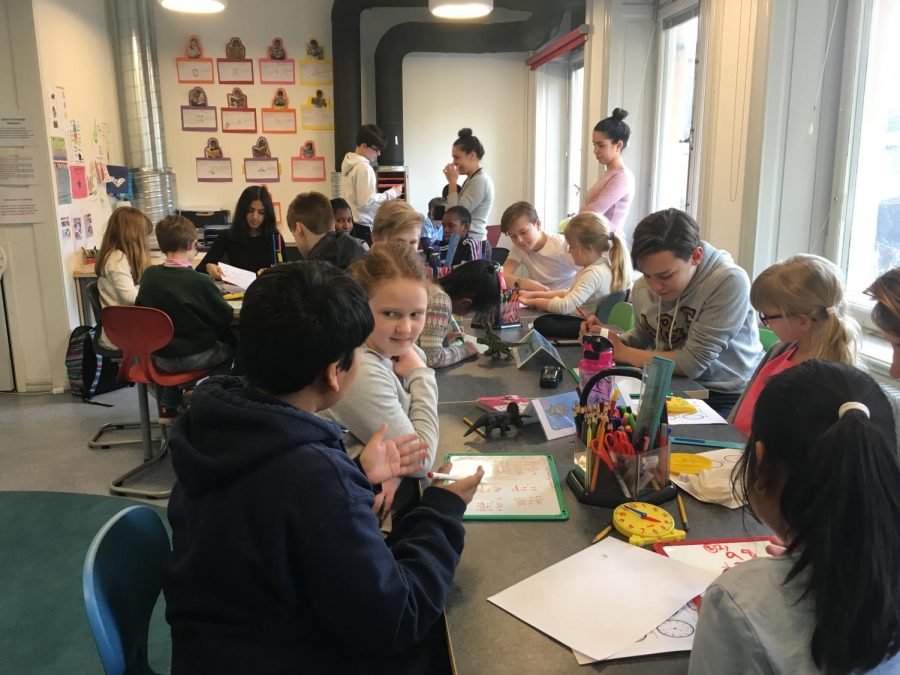SIS celebrates a mathematical wonder
Our reports on Pi day are brought to us by Guest Writers from 10th grade and Junior Reporters from 5th grade.
Hexaflexagons in grade 5!
On Pi day we went to the 10th grade class. We started by going to different stations and got points. Some of the stations had to do with the Pi numbers. We learned how to make a hexaflexagon. We also learned that you can fold paper any size 7 to 8 times. If you had to guess how many folds it would take to reach the moon, it is 42 times. You may not think that but it is true. We also learned the first 6 numbers of Pi – they are 3.14159. At the end of the day we did a Kahoot! about everything we had learned. Now we know lots more about Pi.
Fien and Rebecca 5c
When we the 5th graders arrived at the Annexe, we had no idea what Pi was! Thankfully, the 10th graders introduced and explained Pi to us. One of the activities we did was to brainstorm as many words that start with Pi and name as many circular objects that we could. Another activity we did was to try to memorize the first 12 numbers of pi. The 10th graders were very good teachers and even taught us about the hexaflexagon which you make by folding strips of paper, that then can be flexed or folded in certain ways . We ended with a Kahoot quiz to test all the new knowledge we learned during pi day. 5th grade is proud to say that we have all become pi experts and are very confident with Pi.
Emma and Karolina 5 V
Grade 10 Why celebrate Pi?
Pi day, March 14, is a day when we celebrate and pay tribute to the mathematical constant many of us were introduced to in Geometry. Over the centuries, scientists and mathematicians have tried to determine the exact value of Pi as its value approximates to more than a trillion digits beyond its decimal point. As its exact value is still a mystery, Pi continues infinitely without repetition or a pattern, making it an irrational number. This is what makes it a fun challenge to memorize and find more digits of Pi. By definition, Pi is the ratio of a circle’s circumference to its diameter.
For this day in SIS, all the primary and secondary students participated in activities that had been created and prepared by our very own Secondary students. For every grade, the secondary students created age-appropriate activities for the primary students, allowing them to explore and learn more about Pi and Maths itself.
The students were very interested in the activities we (the Secondary students) had planned, and this showed great commitment and interest in Pi and Maths overall. There was a wonderful feeling of community spirit and positive energy buzzing in the school.
On this day, we celebrate not just this number Pi, but also Mathematics in all aspects.
Andrea J. grade 10







